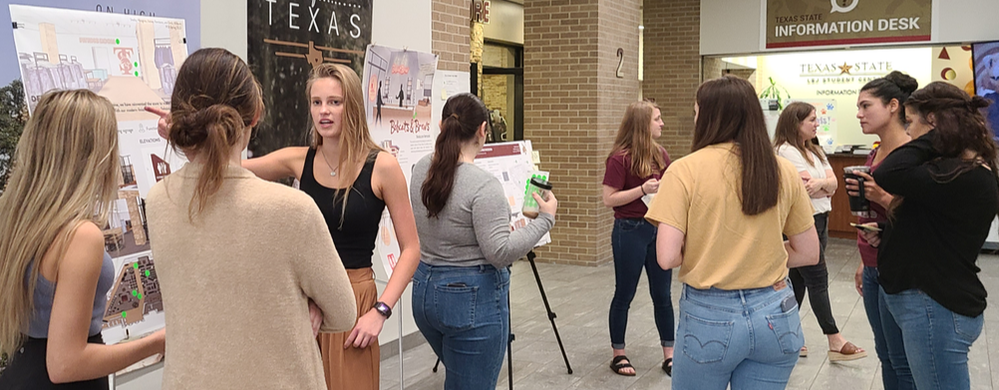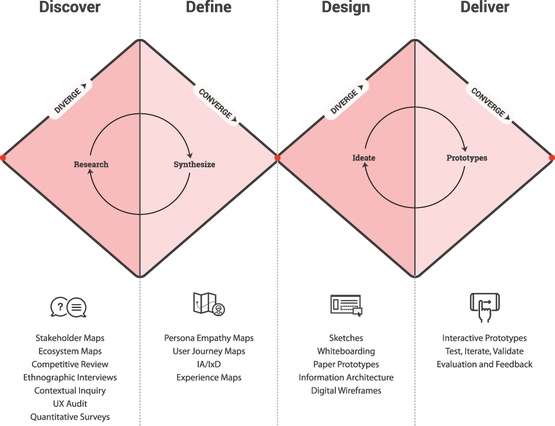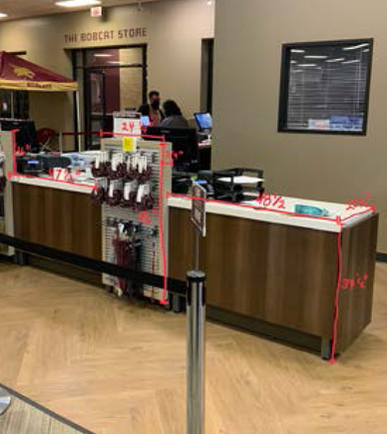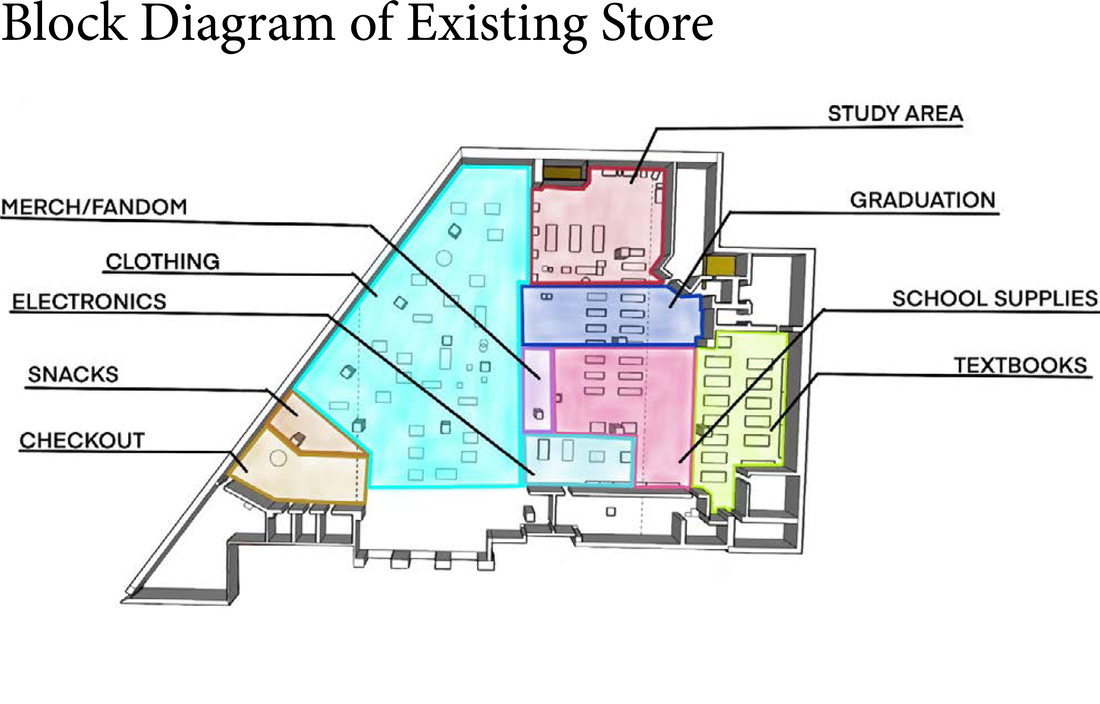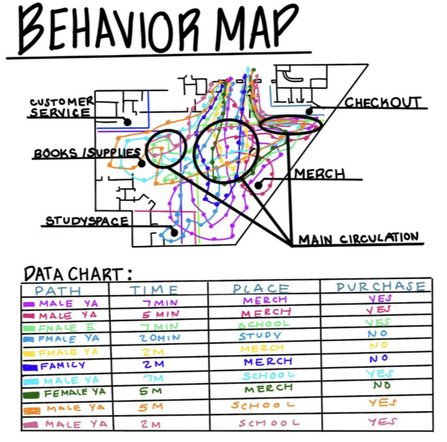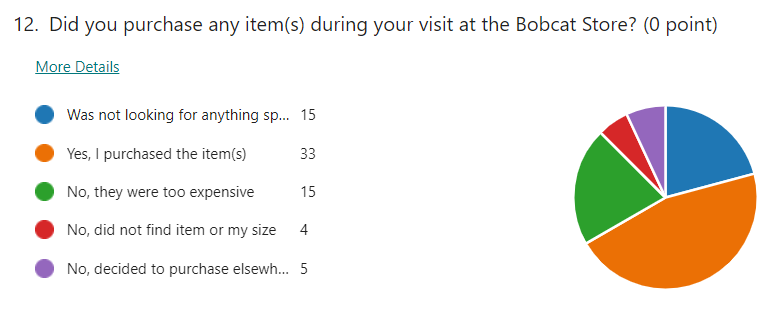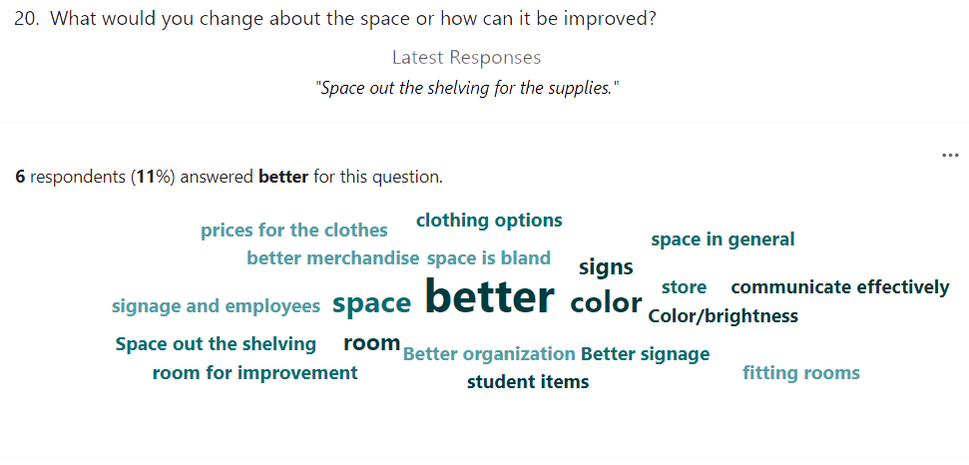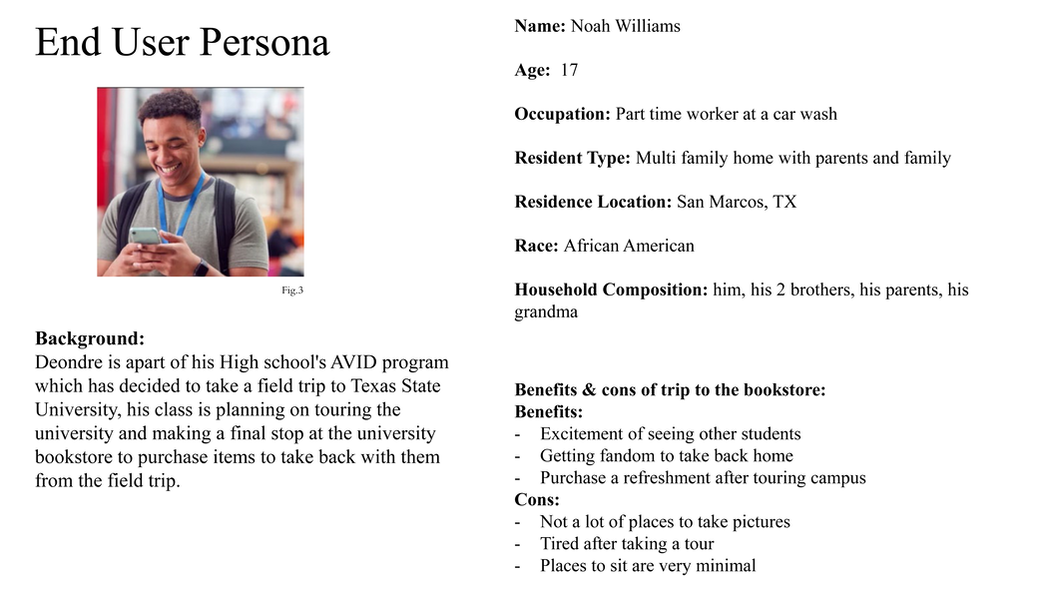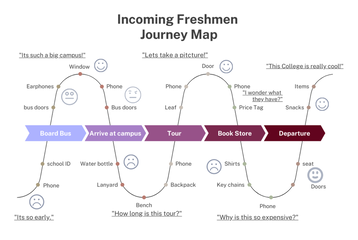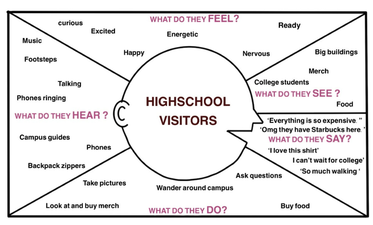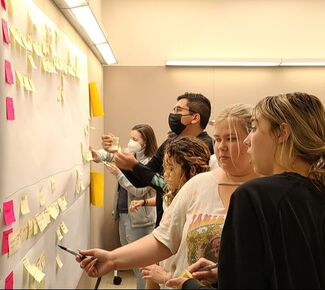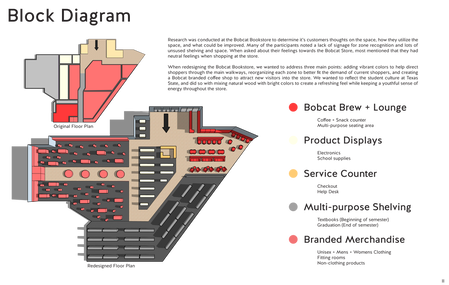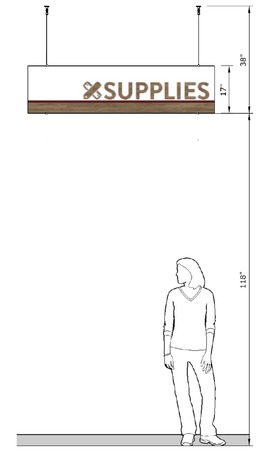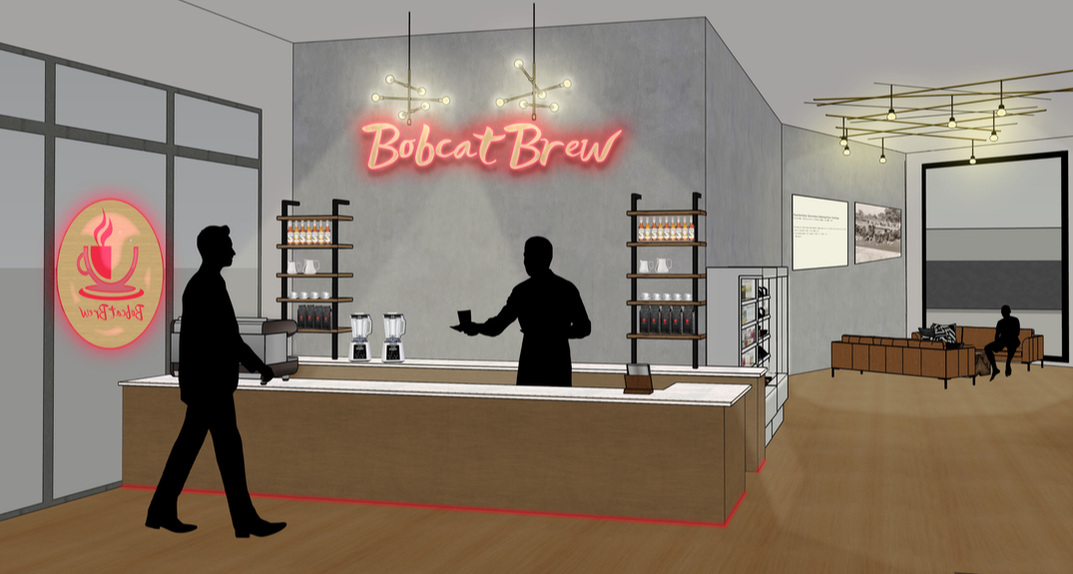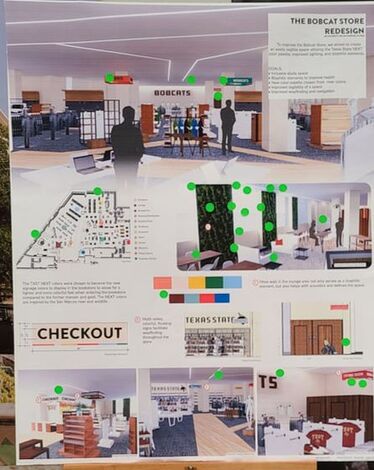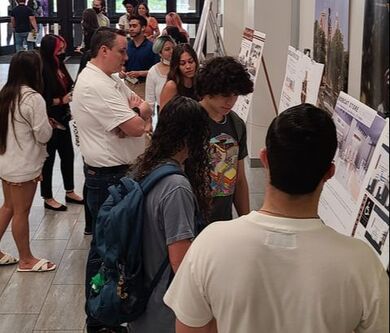Customer Wayfinding Experience for College Retail
Bobcat Store Redesign Proposal at Texas State University
challenge
|
How do interior design students create experiences rooted in the point of view of end-users and stakeholders?
Interior Design's foundation is in the human experience of the built environment. It is critical that students understand the point of view of end-users and stakeholders that will live, work and play in those spaces. Human-centered design and user experience research, offer unique opportunites to change students' awareness of who they design for and offers a process for unpacking complex problems. |
by the numbers41Undergraduate Sophomores enrolled in People Environment and Behavior Spring 2022 semester course.
87%Students who acheived a "Proficient"
(B grade) or higher |
solution
Experiential real-world project-based learning in the design studio provides opportunities for young designers to apply new skills and capabilities to a complex challenge. In this 7-week customer wayfinding experience project, students engaged with end-users, staff and managers who engage with the Bobcat Store at Texas State University.
impact
Students gained new skills in assesing and applying wayfinding best practces and UXR including surveys, contextual interviews, behavior, journey and empathy mapping, prototyping and user testing. Students report that the project increased confidence in applying evidence-based design to their projects.
